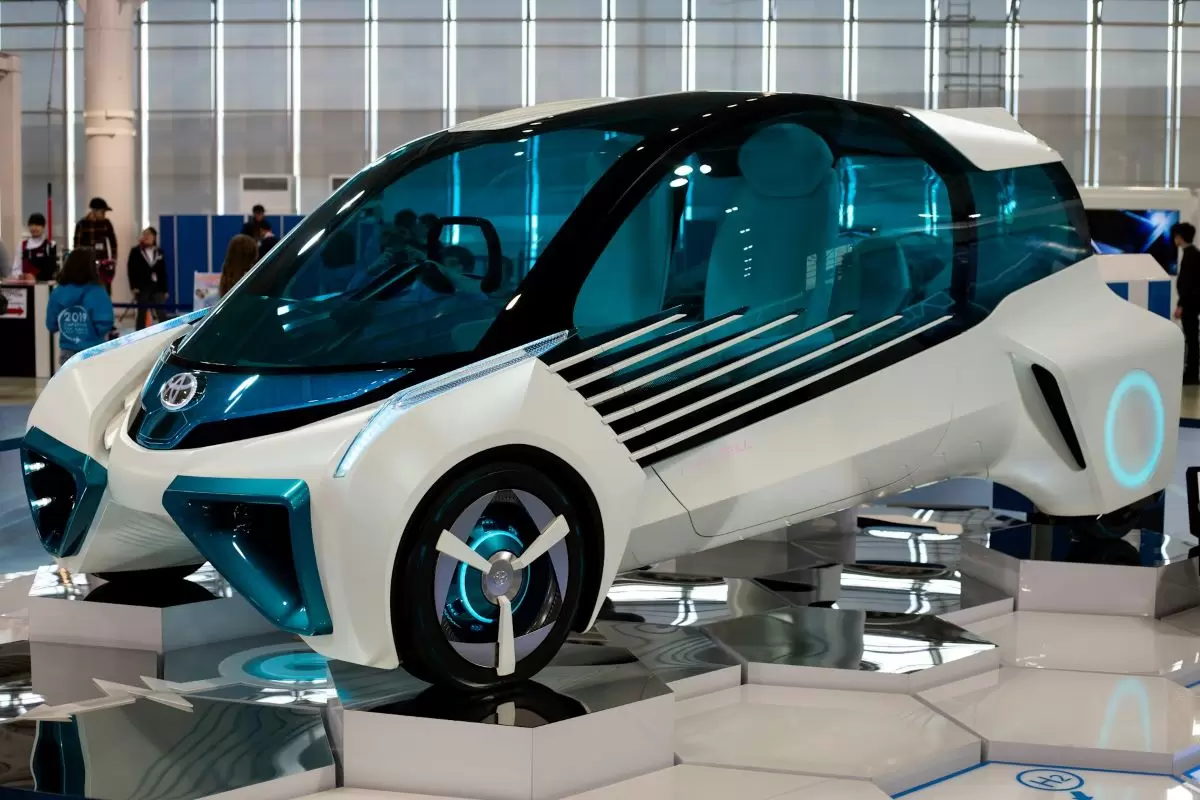Table of Contents
ToggleJapan’s engineering industry is a cornerstone of its economy, renowned for its precision, innovation, and reliability. From cutting-edge robotics to sustainable infrastructure projects, the sector drives technological advancements and positions Japan as a global leader. Let’s delve into the structure, key achievements, and challenges of Japan’s engineering industry.
Industry Overview
The engineering industry in Japan is broad and diverse, encompassing mechanical, civil, electrical, and chemical engineering disciplines. It is a key driver of the nation’s technological and economic strength. Large multinational corporations such as Mitsubishi Heavy Industries, Kawasaki Heavy Industries, Hitachi, and Toshiba dominate the sector, producing a vast array of products and systems, including high-speed trains (with high speed-rail systems originating in Japan), aerospace equipment, industrial machinery, power plants, and consumer electronics.
The sector is also characterised by a robust network of small and medium-sized enterprises (SMEs), which play a pivotal role in the supply chain and contribute to niche innovations. These SMEs often specialise in advanced components, precision instruments, and highly customised engineering solutions that support the larger ecosystem.

Japan’s engineering excellence is deeply rooted in a culture of precision, meticulous quality control, and a commitment to sustainability. The industry spans a wide range of applications, from developing energy-efficient technologies to creating disaster-resilient infrastructure, reflecting the country’s emphasis on practical solutions to global challenges. In addition, Japan’s engineering sector is increasingly integrating digital technologies such as artificial intelligence (AI), the Internet of Things (IoT), and robotics to enhance productivity and innovation, positioning itself at the forefront of Industry 4.0.
The engineering sector’s export-oriented nature further solidifies its importance. Japanese engineering firms have established a strong presence in global markets, particularly in Asia, Europe, and North America, where they are involved in large-scale infrastructure projects and technology partnerships. These firms’ reputation for reliability, innovation, and durability continues to be a major competitive advantage on the international stage.
Technological Prowess
Japan’s engineering industry is synonymous with innovation and precision, encompassing a wide range of advanced technologies and groundbreaking achievements. Some of the most notable technological advancements include:
1. Robotics and Automation
Japan’s leadership in robotics extends to diverse applications that blend engineering expertise with cutting-edge technology:
- Industrial Robots: Companies like Fanuc and Yaskawa Electric Corporation are global leaders in manufacturing robots that optimise assembly lines, enhance precision, and reduce operational costs. These robots play a crucial role in Japan’s automotive and electronics sectors.
- Service Robots: Humanoid robots such as SoftBank’s Pepper and Honda’s ASIMO assist in areas like customer service, elder care, and education. These robots are designed to interact naturally with humans, addressing societal challenges like an ageing population.
- Medical Robots: Innovations in medical robotics include surgical systems such as robotic arms for minimally invasive procedures and rehabilitation robots like Cyberdyne’s HAL (Hybrid Assistive Limb), which helps patients regain mobility after injuries or strokes.
- Agricultural Robots: Automated farming solutions, including robots for planting, harvesting, and monitoring crop health, are transforming Japan’s agricultural sector by increasing efficiency and addressing labour shortages.
2. Transportation Engineering

Japan’s contributions to transportation engineering have set global benchmarks for efficiency, safety, and innovation:
- Shinkansen (Bullet Trains): Japan’s high-speed rail system, exemplified by the Shinkansen, incorporates advanced aerodynamics, noise reduction technologies, and cutting-edge safety systems. These trains operate with unparalleled punctuality and energy efficiency, making them a model for other countries.
- Automotive Engineering: Japanese automakers like Toyota, Honda, and Nissan have pioneered hybrid and electric vehicle (EV) technologies, with Toyota’s Prius leading the global shift toward greener mobility as the world’s first mass-produced hybrid vehicle. Innovations in autonomous driving, including advanced driver-assistance systems (ADAS), further exemplify Japan’s commitment to the future of transportation.
- Maglev Technology: Japan’s development of magnetic levitation (maglev) trains showcases its ability to push the boundaries of speed and efficiency. The Chuo Shinkansen, under construction, is set to be one of the fastest train systems in the world.
- Urban Mobility Solutions: Engineering breakthroughs in smart traffic systems, public transportation infrastructure, and bicycle-sharing programs aim to make urban commuting more sustainable and efficient.
3. Sustainable Infrastructure
Japan’s engineering expertise is evident in its ability to create infrastructure that balances innovation with environmental sustainability:
- Earthquake-Resilient Buildings: Advanced structural engineering techniques, such as base isolation and seismic dampers, are integral to Japan’s ability to construct buildings that withstand frequent earthquakes.
- Renewable Energy Projects: Japan is a leader in green engineering, with notable projects including large-scale solar farms, geothermal energy plants, and offshore wind farms that contribute to its renewable energy goals.
- Smart Grids: The integration of smart grid technology enhances energy distribution efficiency and reliability while supporting renewable energy adoption.
- Water Management Systems: Engineering solutions for flood control, water purification, and wastewater treatment demonstrate Japan’s commitment to sustainable resource management.
- Urban Development: Eco-friendly urban development projects, such as Tokyo’s Otemachi Financial City and Osaka’s Nakanoshima Future City, emphasise green architecture, energy conservation, and community well-being. Innovations include:
- Earthquake-Resilient Buildings: Advanced materials and structural designs mitigate the impact of seismic activities.
- Renewable Energy Projects: Offshore wind farms and solar power installations showcase Japan’s commitment to green energy.
Government Support and Regulation
The Japanese government plays a crucial role in fostering growth within the engineering sector. Initiatives like the “Green Growth Strategy” align engineering innovation with sustainability goals, while tax incentives and subsidies encourage R&D investments. Additionally, infrastructure projects, both domestic and overseas, receive significant government backing.
Challenges and Opportunities
While Japan’s engineering industry is highly innovative, it must address a range of pressing challenges to sustain its global leadership:
- Aging Workforce: With one of the oldest populations in the world, Japan’s workforce is shrinking. This demographic shift results in a shortage of skilled engineers and technicians, creating a pressing need for reskilling programs and international talent recruitment to bridge the gap.
- Global Competition: Countries like China, South Korea, and Germany are rapidly advancing in key engineering sectors, such as green technology and advanced manufacturing. This intensifies competition and puts pressure on Japanese companies to accelerate innovation and reduce costs.
- Sustainability Goals: As the world shifts towards carbon neutrality, Japanese engineering firms face the dual challenge of developing sustainable solutions while maintaining cost efficiency. The transition to renewable energy and eco-friendly technologies requires substantial R&D investment and cross-industry collaboration.

Opportunities for growth include:
- Digital Engineering and Industry 4.0: Integrating technologies like AI, IoT, and digital twins into engineering processes can improve efficiency and foster innovation. For example, predictive maintenance powered by IoT sensors can reduce downtime and enhance productivity in industrial operations.
- Reskilling and Workforce Development: Expanding engineering education and training programs for both young professionals and mid-career workers can mitigate labour shortages. Collaborative initiatives between universities, industry leaders, and the government can drive this effort.
- Global Expansion and Infrastructure Projects: Japanese firms have a strong reputation for quality and precision. By targeting emerging markets in Asia, Africa, and Latin America, Japan’s engineering companies can secure contracts for infrastructure, transportation, and renewable energy projects.
- Green Engineering Innovations: Developing energy-efficient technologies and materials can open new markets and align with global sustainability trends. Initiatives in hydrogen energy and carbon capture present significant growth potential.
- Collaborative Research and Development: Strengthening partnerships with international institutions and tech leaders can accelerate the adoption of cutting-edge innovations in areas like robotics, renewable energy, and smart infrastructure.
Conclusion
Japan’s engineering industry stands as a beacon of innovation, resilience, and global influence. With strengths in robotics, transportation, and sustainable infrastructure, the sector continues to shape the future of technology. However, to maintain its competitive edge, it must address challenges such as workforce shortages, global competition, and sustainability demands. By embracing digital transformation, expanding international collaborations, and investing in green technologies, Japan’s engineering firms can unlock new opportunities and further solidify their leadership on the world stage. As the industry evolves, its ability to adapt and innovate will be key to ensuring long-term growth and continued success.
Eos has over 15 years of experience serving the Japanese market. Check our services here or book a free consultation now.







